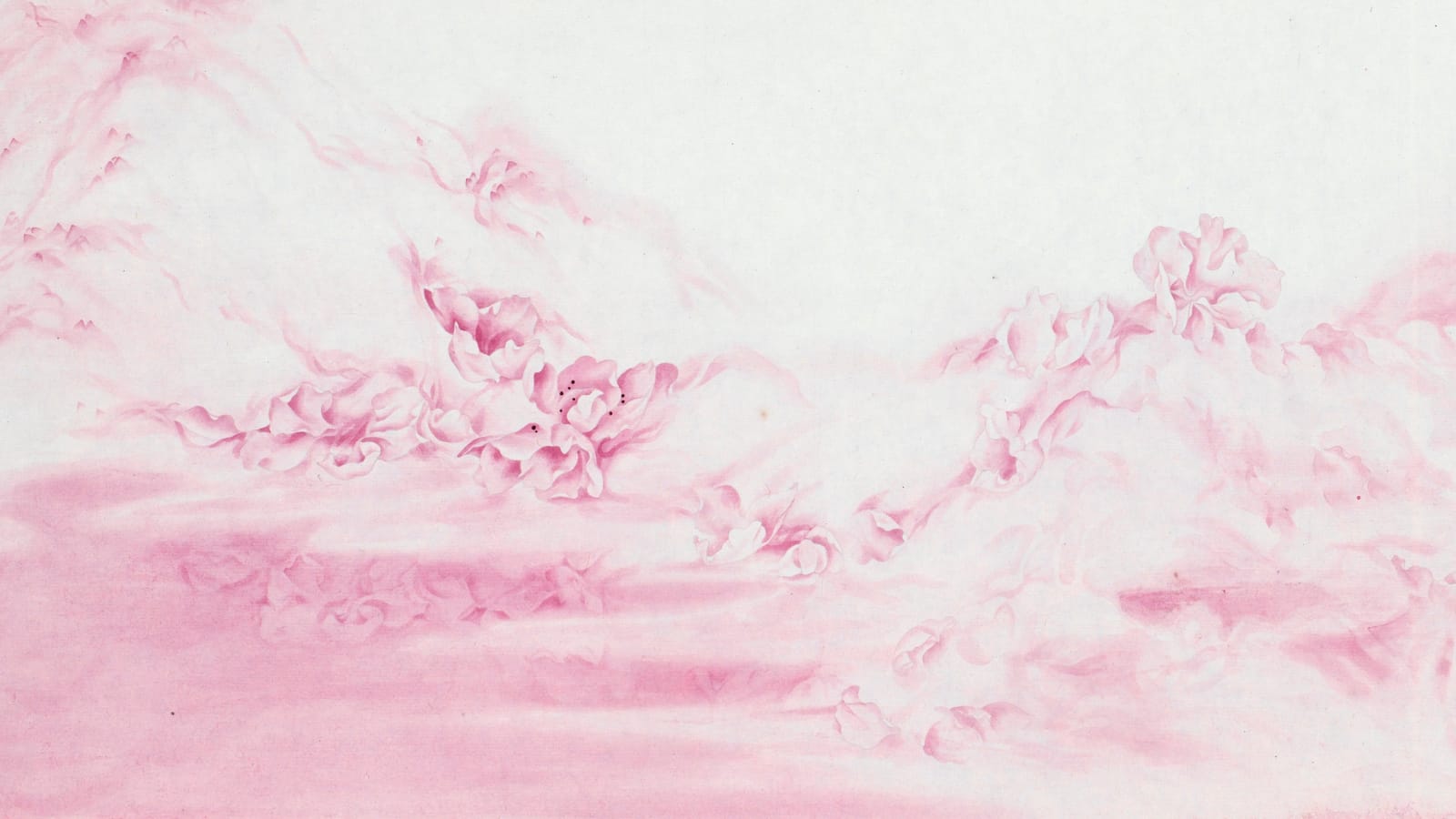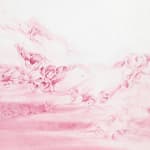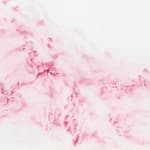-
Artworks
Kang Chunhui 康春慧
The Hidden Protagonist: Mount Fuchun 隐逸的主角:富春山, 2023-2024Ink and mineral pigment on paper
水墨 矿物颜料 宣纸33 x 750 cm
13 x 284 1/4 inCopyright The ArtistFurther images
In her latest artistic endeavor, Kang Chunhui extends the boundaries of her practice by revisiting a familiar pictorial theme: the Fuchun Mountains. This time, she openly references the influential handscroll...In her latest artistic endeavor, Kang Chunhui extends the boundaries of her practice by revisiting a familiar pictorial theme: the Fuchun Mountains. This time, she openly references the influential handscroll of Huang Gongwang, transforming it in a gesture that challenges conventions within the Chinese pictorial tradition. In China, there exists an inherently interpretive tradition where referencing classical poetry or texts holds significant cultural and social currency. Kang Chunhui's approach is deeply empathetic: she seeks to understand what Huang Gongwang envisioned at 80 years old, when he executed his painting, believing that literati painting reflects the places they yearned for in the afterlife. She perceives a longing for an idealized place beyond this life's reach, prompting her to personally visit the Fuchun Mountains on 31 March, 2024. Following in the tradition of Dong Qichang, the late Ming Dynasty Chinese art theorist, calligrapher, and painter (1555-1636), who championed firsthand experience of the landscape; he suggested that artists journey to the locations of ancient masterworks (carrying either the original or travel-sized copies) not merely to directly engage with nature, but to gain deeper insight into the mindset and inspiration of the old masters. Walking around the entire Fuchun River and exploring the landscapes around Hangzhou and Wuxi, she seeks to capture the essence of the misty, rainy spring depicted in Huang Gongwang's painting: "Sensing my surroundings deeply, it's as if every element in that place imparts its own unique essence onto me. Whether it's the rain and mist, the morning and evening light, or anything else, each contributes to this shared feeling."(1) Starting from an interest in Huang Gongwang's feelings, Kang Chunhui eventually finds her deep fascination in depicting nature lies in her intimate and emotional connection with it, rather than solely paying homage to past masters. She describes this connection as a form of homage, not to the masters of the past, but to nature itself.
In her typical creative process, characterized by swift execution following extensive conceptualization, Kang Chunhui dedicates an entire month upon returning to her Beijing studio to translate her embodied experience onto a specially hand-made paper scroll measuring 33x750 cm. The stunning outcome, "The Hidden Protagonist: Mount Fuchun," compositionally follows the most relevant structural outlines of the inspirational painting, creating a floral portrayal of the natural world. Just as a skilled calligrapher feels the brush's elasticity and contemplates the interplay between ink and water upon the first stroke, Kang adeptly captures the essence of the landscape across four seasons with her syncretic technique blending meticulous detail and freehand style. Kang employs red monochromatic peach blossom flowers as potent symbols, integrating solid masses and trees into voluminous petals with brilliant red pistil-like dots, highlighting specific reference details. Here and there, figures such as a man on a boat or a flock of ducks are depicted as luminous shadows on the untouched pictorial surface, graciously blending with the scene while leaving a minimal imprint, yet evoking vivid traces of their formal presence. The intense brightness of light in certain areas of the composition is so pronounced that it results in parts of the surface remaining completely untouched, a deliberate effect achieved through the use of the liu bai technique.(2) In contrast to tradition, certain portions of the landscape depict the water or sky unconventionally, deviating from leaving them blank. The artist attributes this approach to her aerial perspective from an airplane flying over the depicted area. This perspective enables her to observe phenomena such as the reflection of light from clouds or water surfaces, a perspective unknown to ancient painters.
Natural forms, especially rocks, hold a central significance in Chinese traditional landscape depictions, a concept that resonates both historically and in modern contexts. Rocks and mountains, being solid forms, are integral to this portrayal. Thanks to her cunfa technique, the artist is able to create a three-dimensional character that, if on the one hand is able to transpose the tridimensional character of the depicted subject on the other, thanks to her floral transmutations, adeptly capture tactile sensations of surfaces, rendering forms that exude unbroken fluidity. In her Fuchunshan rendition, Kang Chunhui's exploration of plains and folds, serves as a metaphor for contemplating broader concepts such as time and space.
Starting with a vivid depiction of budding peach blossoms, the scene exudes nature's dynamic energy, flowing spontaneously through the landscape with varying movements and intensities that echo the terrain's contours, water flow, and seasonal changes. As the peach blossoms reach their final season, they reappear on the opposite edge of the scroll, creating a deliberate continuity. When the two edges of the handscroll are brought together, the entire landscape forms a unified composition. All things go back to their roots. All things flourish and return to their root. The cycle is complete.
(1), Kang Chunhui in an interview with the author in his Beijing studio, 27 April, 2024.
(2), Liubai (留白) is a term in Chinese art that refers to leaving blank space deliberately in a painting. It is a technique used to create balance, harmony, and emphasis within the composition. By strategically leaving areas of the paper or canvas untouched by paint or ink, artists can create contrast, draw attention to specific elements, and convey a sense of depth or openness in the artwork.
在她最新的艺术创作中,康春慧通过重新审视"富春山"这一熟悉的绘画主题,对她艺术实践的界限进行了进一步拓展。这一次,她公开引用了黄公望最具影响力的手卷《富春山居图》,并以一种挑战中国绘画传统惯例的方式对其进行了转化。在中国传统中,引用古典诗歌或文本具有重要的文化和社会价值。康春慧的方法是深度的共情:她试图去理解黄公望在80岁创作这幅杰作时的设想,相信文人画中的山水反映了艺术家来世所向往的地方。她也从中感悟到一种对超越尘世的理想化境地的渴望,这也促使她在2024年3月31日到富春山游历。追随明末文人艺术理论家、书法家及画家董其昌(1555-1636年)的传统--他建议艺术家前往古代杰作所描绘的地点(并携带原作,或是较小尺寸的摹本),不是为了直接与自然接触,而是为了更深入地理解古代大师创作时的心态和灵感。漫步在整个富春江沿岸以及探索杭州和无锡周边的风景时,康春慧试图捕捉黄公望画中那烟雨朦胧之春的精髓:"深刻感受周围的环境,仿佛那个地方的每一个元素都将其独特的本质传递给我。无论是雨是雾、晨昏的光线,还是其他任何东西,每一样都融入了这种共享的感觉之中。" (1)从挖掘黄公望对富春山的情感作为兴趣的开始,康春慧最终发现她对描绘自然的深深着迷不仅仅是对过去大师表示敬意,而是在于她与自然之间那亲密的情感连接。她将这种连接描述为一种致敬,但不是对过去大师的致敬,而是对自然本身。
康春慧的创作过程通常是在大量的概念化准备的基础上迅速作画。结束了富春山之旅并回到北京的工作室后,她花了一整个月的时间将自己的体会和感悟转化为一幅尺寸为33x750厘米的手工特质长卷——《隐逸的主角:富春山》。这幅令人惊叹的作品在构图上遵循了黄公望《富春山居图》的整体结构与轮廓,呈现出自然世界的花卉写照。正如熟练的书法家落笔时能够感受毛笔的张力并思考墨与水的相互作用一样,康春慧以她融合了对细节的细腻描绘以及自由写意的技法,熟练地捕捉了四季山水的精髓。她以红色桃花作为主体象征符号,并在大量以花蕊状红点所点缀的花瓣中融入了具有坚实厚重感的山石与树木,凸显出原作的具体参考细节。舟上人物及鸭群等形象穿插于整个画面之中,以光影的形式呈现在空白区域,仅保留最少印记,既和谐优雅地融入场景之中,毫不突兀,又足以展现各自生动形象的轮廓。构图中某些区域的光感和亮度格外强烈,表现为画面中那些未被任何色彩和笔触所渲染的部分,这是艺术家以留白的技法所实现的效果。不同于传统技法,康春慧山水中的某些部分以非常规的手法来描绘水和天空,不用留白(2)。这种方法源自她从飞机上俯瞰所绘山水区域的高空视角。这种视角让她能够观察光线在云层或水面的反射等现象,而这对于古代画家而言是前所未知的。
自然形态,尤其是岩石,在中国传统山水描绘中具有核心意义,这一概念在历史和现代背景下都能产生共鸣。山石作为坚实的固体形态,是山水画中不可或缺的一部分。凭借熟练的皴法,艺术家能够创造立体的形象,并将其与所描绘主题的立体形象进行转换。而通过对花卉进行变形,艺术家能够熟练地捕捉表面的质感,描绘出具有连贯流动性的形态。在康春慧对富春山的演绎中,她对平面及褶皱的探索也标志着她对于时间和空间等更为广泛概念的思考。从对含苞欲放的桃花的生动描绘开始,整个画面散发出大自然的勃勃生机与能量,以不同的动态和强度自发地流动于所绘山水之中,呼应自然地形的轮廓、水流和季节变化。当桃花季即将结束时,它们又重新出现在画卷的另一端,呈现出一种有意的连续性。当手卷的两端衔接在一起时,整幅山水便形成了一个完整统一的构图。万物云云,各复其根。成为一个完整的循环。
(1)引自作者与康春慧的访谈,2024年4月27日于康春慧北京工作室。
(2)"留白"是中国绘画中的一种技法,指有意将画面的某些区域留为空白,在构图中常起到平衡、和谐以及强调的作用。通过战略性地留白,艺术家能够制造对比,将观者注意力引至某些具体元素,以及表现画面深度和开放性。1of 6








